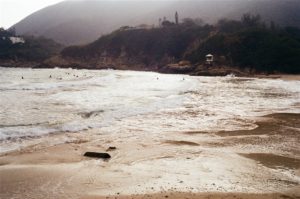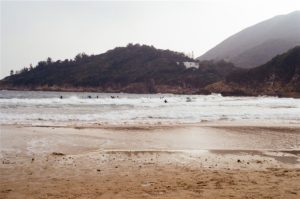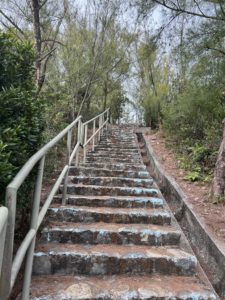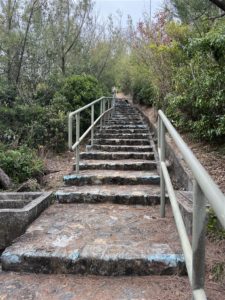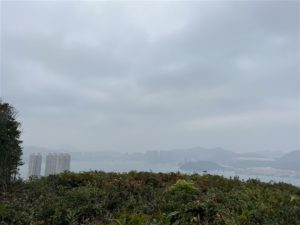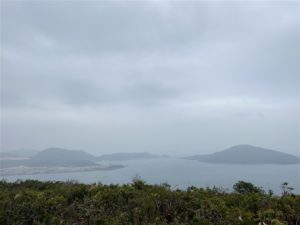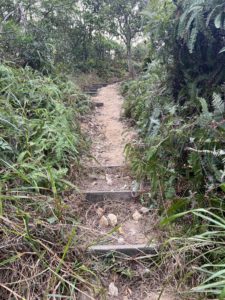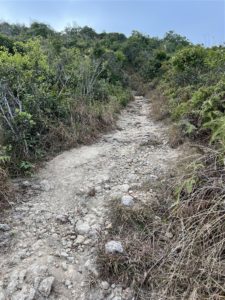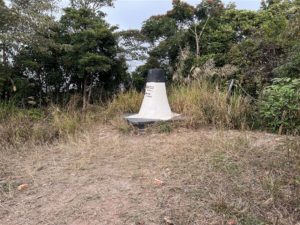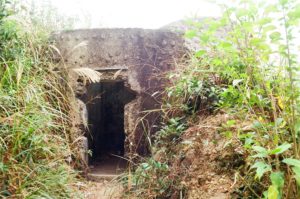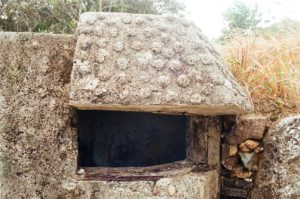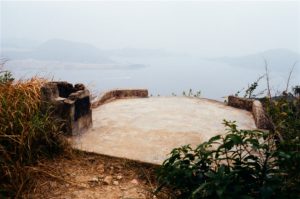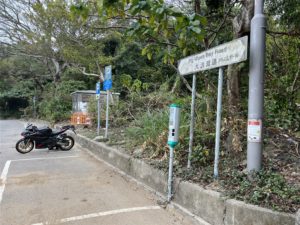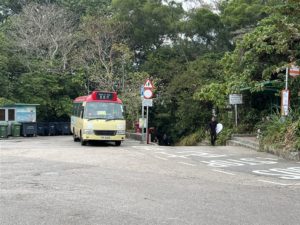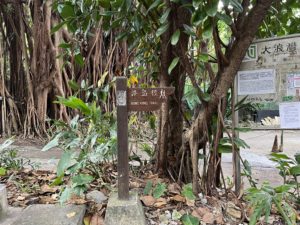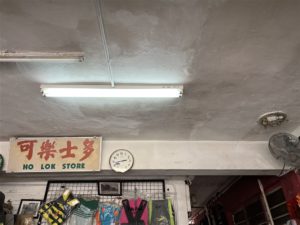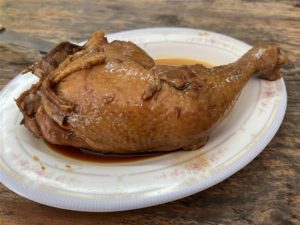From Big Wave Bay to the Pottinger Peak
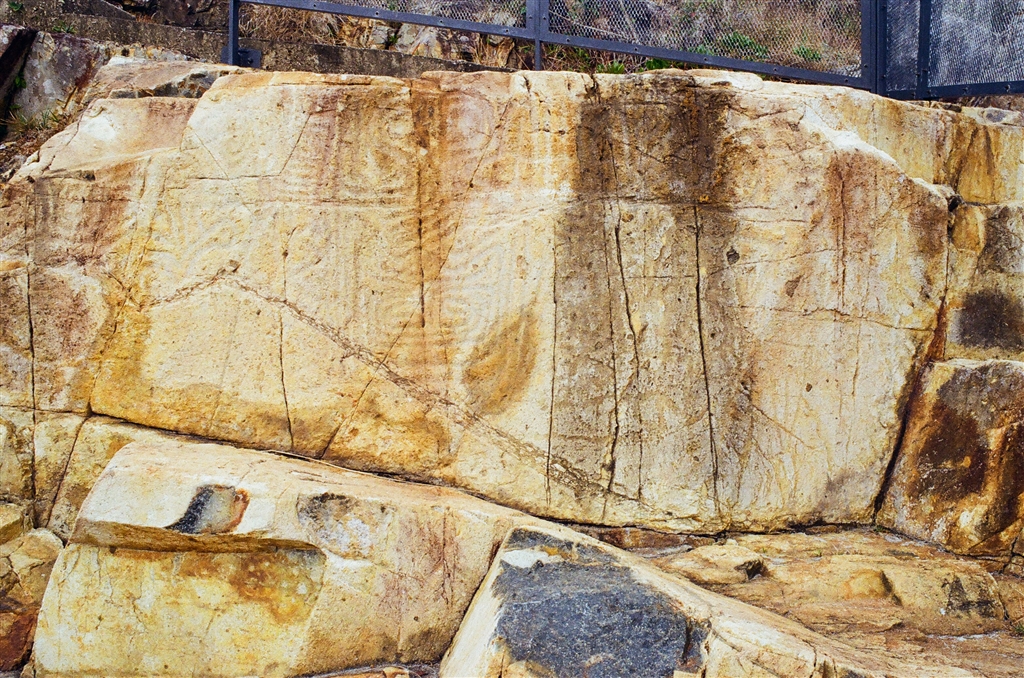
The plan of the day was first a walk in Shek O’s Tai Tau Chau (Urn Island), then head over to Big Wave Bay and ascend the Pottinger Peak via the Pottinger Peak Country Trail. The walk ended in Chai Wan, when I found my way (a long way) to the Chai Wan MTR station to go home. Because there are two distinct parts in this walk, I will discuss the Shek O part and the Big Wave Bay part separately.
The whole journey between Shek O and the northern entrance of Pottinger Peak Country Trail took me four and a half hours, excluding a half hour when I ate a snack at Ho Lok Store in Big Wave Bay.
The Rock Carving of Big Wave Bay
From the Big Wave Bay Road parking lot, head over to Big Wave Bay. As its name suggests, big waves wash up this beach. There were many surfers on the this cold winter day that I visited.
Pass through the beach. You will then see a barbeque area. Go pass it and there is a crossroads. The Big Wave Bay Rock Carving lies on the path on the right.

Photo: At this crossroads, the path on the right leads you to the Rock Carving of Big Wave Bay. The stairs on the left will lead you to the Pottinger Peak Country Trail.
The Rock Carving of Big Wave Bay is one of the nine prehistoric rock carvings discovered in Hong Kong. In previous occasions, I have visited the Rock Carvings of Lung Ha Wan, Cheung Chau and Po Toi Island.
A police officer discovered the Rock Carving of Big Wave Bay in 1970. According to the descriptions on site, these are “geometric and animal patterns” but I certainly do not have the training to tell, especially with animal patterns. These patterns “symbolize the cloud thunder or other forms of nature” with “hints of human or animal images.”

Because these patterns resemble the geometric patterns on the pottery and bronze vessels of the Bronze Age, it is generally understood that they are dated to the same. That is about 3,000 years ago.
I have reported ony my previous sightings of the Rock Carvings in other locations, that these carvings are all in the coastal areas of Hong Kong. This suggests that those very early inhabitants of Hong Kong led sea-faring lives. The descriptions on-site says that they “may have been intended to propitiate the power of the sea.” That is surely a very convincing story for the Rock Carvings.
Like all eight other rock carvings in Hong Kong, the Rock Carving of Big Wave Bay is a declared monument.
Worthy of mention here is the Rock Carving of Cape Collison, which is quite close to the northern entrance of the Pottinger Country Trail. Many hikers visit that site and the Pottinger Peak in one go. However, the Rock Carving of Cape Collison, which was discovered relatively recently in 2018 and became a declared monument in 2019, requires some unaided trekking on the rock outcrops on Cape Collinson Path. Therefore it is best to plan a group outing to see it.
The Hike Up Pottinger Peak
Heading back from the Rock Carving, you will come back to the crossroad. Make a sharp right to head up the Pottinger Peak on the stiars. On this part of the trail, you will be walking up a continuous 1000+ steps on a well-paved, well-kept trail. As you walk, you will have Big Wave Bay behind your back. Do take some time to turn around to savor the views.
This trail has three signposts that mark the progress, each with a rest pavilion. I took my breaks at each of these pavilions. Because the path is well-paved throughout, the hike up was smooth and it did not require extra attention. The hike became very easy after passing the second pavilion.
There are some seaward views at the third pavilion, but it was hazy that day and this was the best I could do.
Photos: Views at the third pavilion of the Pottinger Peak Country Trail
The Pottinger Peak
It was around 4pm or so when I made it to the third pavilion. Since it was more than an hour before sunset, I decided to take a quick further hike up the Pottinger Peak.
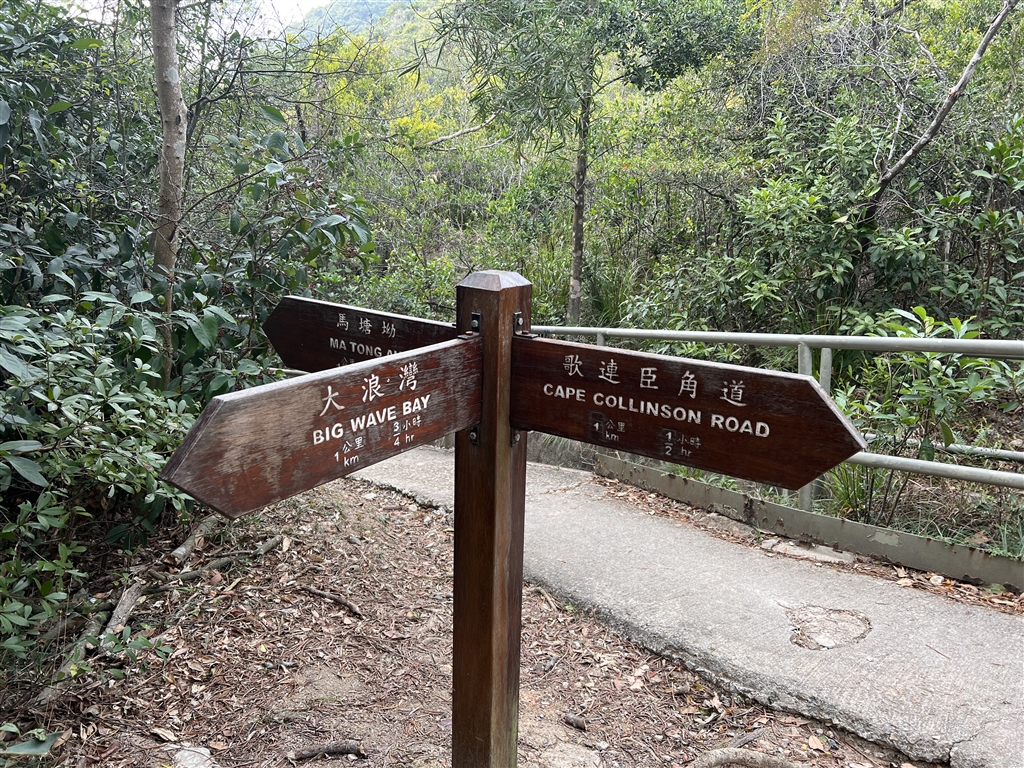
Photo: Clear signs on the way on Pottinger Peak Country Trail
Unlike the previous section of the walk, which is a standard trail as the Pottinger Peak Country Trail, the path up the Pottinger Peak is an unpaved mountainous path.
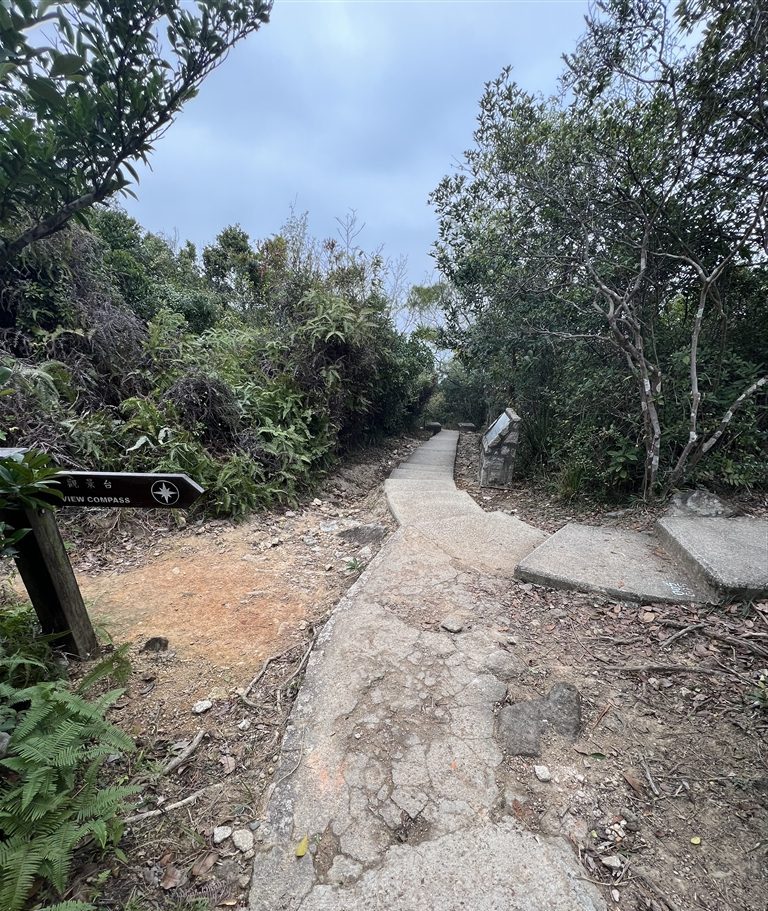
Photo: at this intersection, the right path leads you to the third pavilion on the standard trail. The left part is a 15-minute hike up the Pottinger Peak. The trail ahead leads you back to the trail’s northern entrance at Cape Collinson Road.
I therefore paid much attention throughout this part of the hike due to my frequent injuries. It was a gentle incline throughout, and I reached the signpost at the Pottinger Peak in fifteen minutes. Besides the signpost, there is just a transmission tower of some sort at the peak. Otherwise there is no big view to speak of there.
I was delighted to see what seems to be a former war site on the way. I believe this is a pillbox.
Bloggers have noticed some other war relics in the area, but I was probably too keen on finishing the hike to notice. It was becoming dark and I hiked alone that day.

Photo: View on the way up the Pottinger Peak
Once back at the crossroads, turn left to walk on for another seven minutes or so to exit at Cape Collinson Road. On the map, the closest civilization should be Siu Sai Wan, but I needed to get on the MTR and so I walked a longer way to the Chai Wan MTR station via Cape Collinson Road. There will be no public transport available on this section of the walk. It goes downward on city roads so it did not strain the knees.
How to Get There
At the Shau Kei Wan minibus station, (across from the Shau Kei Wan Bus Terminus) take red top minibus Shau Shek Route and get off at the Big Wave Bay Road parking lot. Then follow the Hong Kong Trail direction to reach Big Wave Bay.
I passed by the Ho Lok Store and had a small meal there before heading up the trail. That turned out to be a good decision because the hike was slightly more demanding than I had expected. I highly recommend the Ho Lok Store because its food really is very good, especially the Thai fried rice selection.
Sources
Historic descriptions on-site.

